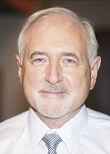Gold Investors Watch Oil, The Dollar And Greece
 The gold market will be buffeted by positives and negatives in this year's second half, but in July it's too soon to know whether the bulls or bears will prevail.
The gold market will be buffeted by positives and negatives in this year's second half, but in July it's too soon to know whether the bulls or bears will prevail.
Gold is hovering at $1,100 an ounce now after dropping to its previous five-year low of $1,142 last fall. The yellow metal was dragged down in part by crude oil, which touched a six-year low this spring. Silver and platinum sagged. Foodstuffs have been weak too. In the grains, corn is trading just above last year's five-year low. The 17-market Reuters/Jefferies Commodity Research Bureau Index fell to its lowest in more than six years this spring.
For many nations, early 2015 has been a time of little economic growth and minimal inflation. More than two dozen central banks around the globe cut interest rates in early 2015.
Crude oil prices, however, have started to improve. Reduced investment in drilling and slower activity on the part of U.S. shale producers, along with Middle Eastern tensions, should continue to buoy oil prices in 2015. That can be favorable for gold, which responds to any whiff of inflation.
U.S. gross domestic product contracted in the first quarter but appears to have grown since, with second-quarter results awaited on July 30. This spring, analysts thought the Federal Reserve might start raising U.S. interest rates in the fall. Higher rates make gold, which is non-yielding, less attractive to investors. Forecasts for Fed tightening waned in June, however, as the economy looked less than robust.
The U.S. dollar surged from 2014 to this year's first quarter, reaching a 12-year high against the euro, and then backed off a bit. The strong greenback has weighed on gold, which is quoted around the world in dollars. This spring the dollar remained supported by the possibility that Greece would exit the European Union this year and with the potential of currency contagion in the other southern Euro members. In late breaking news, Greece has yet another approved bailout (their third) and have avoided an exodus from the Eurozone.
Growth in China's economy this decade has been positive for the gold market as, according to the World Gold Council, China overtook India as the top gold consumer two years ago. In the last five years, China has been building up its official gold reserves and on the private side, a Chinese venture announced in May its aim to raise $16 billion for the largest gold investment fund in history.
In the second half of this year, gold investors will be watching the United States, Greece, China and other nations, along with commodity prices and currencies. Gold will be supported by a possible, further recovery in crude oil, but capped by any U.S. interest rate hikes or dollar strength.
In May, the International Monetary Fund released risk assessments showing an uncertain outlook for gold but upward potential for oil. The IMF analyzes commodity price risks with the help of futures and options markets and in May, it said that the likelihood of West Texas Intermediate crude falling below $40 a barrel in the next 12 months was four percent, while the chances of it exceeding $80 was growing, signaling an upward shift. It pointed out that crude traded at $61 a barrel in early June and that the probability of gold falling below $900 an ounce rose to 10 percent from six percent the previous month. Gold's prospects of getting above $1,500 grew slightly to six percent, reflecting uncertainty about the metal's direction.
In a negative sign, since March, money has flowed out of gold Exchange Traded Funds, or ETFs, which are backed by the physical metal. Open interest, or contracts outstanding, in COMEX gold futures is higher now than in the last three years, but below levels seen in 2010 to 2011 when gold was climbing.
So we are in for some volatility with possibilities for paradigm shifts in gold pricing and with the potential of the “normal” market being surprised.
********
To learn more about factors likely to impact gold in the second half of this year, visit www.dillongage.com on the web or view regular updates directly from the Market Gage Blog.
********






 Stephen W. Miller is Chairman of the Board and President of Dillon Gage Incorporated of Dallas, a firm who’s companies include Dillon Gage Metals, an international precious metals wholesaler based in Dallas, TX. Miller is also a co-founder and President of HELPS International (HELPS). HELPS is a non-profit organization that was founded in 1984 and created to provide relief and development for the country of Guatemala.
Stephen W. Miller is Chairman of the Board and President of Dillon Gage Incorporated of Dallas, a firm who’s companies include Dillon Gage Metals, an international precious metals wholesaler based in Dallas, TX. Miller is also a co-founder and President of HELPS International (HELPS). HELPS is a non-profit organization that was founded in 1984 and created to provide relief and development for the country of Guatemala.








